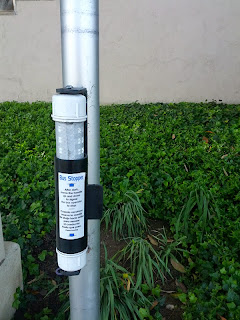While going for my daily walk a couple weeks ago, I noticed that certain bus stops now have a new feature that 1) enables bus riders to signal to bus drivers to stop when it's dark out and 2) subsequently for bus drivers to see that a certain bus stop has passengers. It's the first time I've seen this and although I've never used it I hope it serves its purpose well. The text describing users how to use it is clear. See the photos below.


The one concern I have is if it's too dark for a bus driver to see a person(s) waiting for the bus wouldn't it also be too dark for a passenger to feel comfortable waiting in the dark for the bus?



